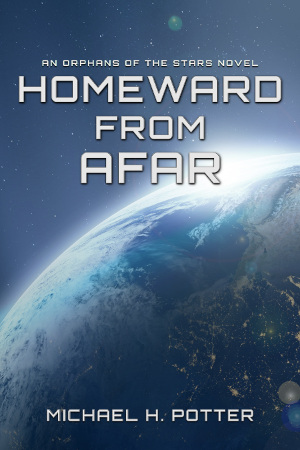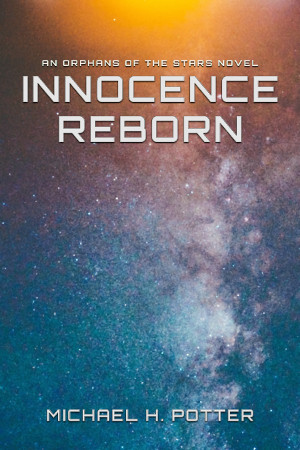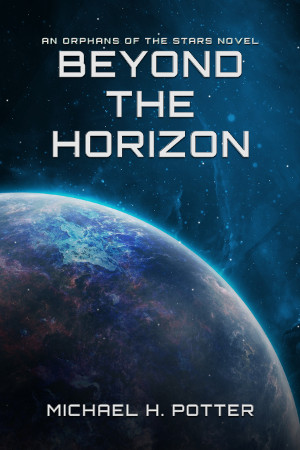My novel Innocence Reborn is coming to Amazon in paperback and ebook form on June 9! You can check out the prologue absolutely free over on my Patreon starting February 9. In the intervening months, I’ll use this space to talk about the setting, the characters, and the writing process for what has become one of my favorite stories.
I’ve said before that I enjoy writing child characters. There’s something to be said for the simple pleasure of seeing the world from the point of view of a boy or girl. Immature by our standards, innocent, sometimes bewildered by the world around them, they can yet see a wonder that we adults have lost. When written well, a child’s perspective can be beautiful, if for no other reason than it takes us, the readers, back to childhood ourselves.
In the past, I have written numerous stories revolving around children, and quite a few had teens or even preteens as the protagonists. Lair of the Wizards, for example, revolves around a group of teenagers (and, for one of them, his 8-year-old sister) finding a secret base full of advanced technology. Two of the short stories of The Linear Cycle are told from such a perspective, as well. “Either Side of Night” tells of 11-year-old Dusk’s journey from a scared boy in a world gone mad to a veteran soldier of a zombie apocalypse, while “The Final Sacrifice” is the heartbreaking story of Tod, the bullied teen who discovers the deadly secret of the power within his blood.
Those are all great stories. Even “Miracles” isn’t too bad, and it’ll be better once I finally edit it; that short, which I used to use as my introduction, concerns twins, Thomas and Mira, on their way across the Atlantic in the 1730s, and it was my first completed work centered on children.
It hooked me. When I finished “Miracles” back in 2015, I knew it wouldn’t be the last time I explored the perspective of youth. Lair came not longer after—well, it started around then, at least.
Let me admit right now that I am not a fan of anime. I don’t know what it is, but something about the Japanese style of animated entertainment, in all its various guises, rubs me the wrong way. Maybe it’s from growing up on a steady diet of Hanna-Barbara and MGM cartoons. Maybe it comes from never really going in for JRPGs until I was in my 20s. Whatever the case, I just don’t “get” anime. Sometimes the animation itself bugs me. If not that, then the overwrought drama in the voice acting. And if I can get past both of those, the beats of an Asian story don’t align with the Western sort I know and write. No matter what, my mind will find some reason for rejection.
That’s not to say I haven’t tried. And the premise sometimes catches my attention, even if I’m turned off by the presentation. That was the case for Sword Art Online, for instance. Watching the first two episodes of that (because my brother had it on while I was playing on his gaming PC) helped inspire my novel Before I Wake.
Inspiration struck again a few years ago. The circumstances were the same: I was playing, if I recall correctly, Civilization IV. Something that really doesn’t trigger my storyteller instincts, for sure. But my brother’s TV habits caused me to see the first episode of Mobile Suit Gundam: Iron-Blooded Orphans. Once again, I wasn’t hooked, but I was intrigued.
Many of my stories come about because I see a concept or topic and think, “What if I wrote that?” That’s how it was with The Linear Cycle: what if I wrote something like The Walking Dead? Heirs of Divinity (I will release that book one of these days, I promise!) was my attempt at crossing Neal Stephenson’s The Baroque Cycle with Harry Potter. And the Otherworld series, as I’ve stated in the past, came as a direct response to Stargate Universe‘s cancellation.
So here I am, watching a reasonably hard sci-fi story about a group of kids who have to grow up fast on a spaceship. Could I write that? What if I did? At the same time, I had started getting very heavily into The Expanse by James S. A. Corey, a somewhat different envisioning of a future involving interplanetary colonization.
Those two, then, were the ingredients for my special concoction. But I knew I would have to give it my own flavor.
The premise
I titled my series Orphans of the Stars. That’s a nod to the anime that provided the seed, obviously, but I feel it’s one of my best titles nonetheless. As a hook, it just sounds so right. The first book I named Innocence Reborn, a phrase derived from a line in the Nightwish song “Bless The Child”. And those two names were portentous in a way I didn’t expect at the start.
If you’ve read my articles on here, you know I’m a worldbuilding nut. And a space nut. This was my first attempt at space-based science fiction, and I wanted to do it right. So I set out to create a story, a universe, I would want to experience.
First off, I wanted something not too Star Trek. Not because I don’t like it, but it’s been done to death, and there are aspects of that universe I think are out of place. So this isn’t a utopian future, nor is it the capitalist dystopia of The Expanse. And I didn’t go for the ultra-hard style of sci-fi that the purists prefer, because the idea I had requires some bending of physics.
In the end, I made three main breaks with our world. First, in the Orphans setting, FTL travel is possible through something broadly similar to hyperspace or warp drives. Travel between star systems does take time, but not the ages we would need. This allows for colonization of terrestrial planets, which are common enough to make that worth the effort. (This isn’t so outlandish that it’s unbelievable. Current estimates place the number of potentially habitable worlds as high as 1.6 per star.)
Second, my setting has viable reactionless propulsion. This is technically a violation of Newton’s Third Law, yes, but 2016 brought out a number of possible loopholes in that law. Emdrives, the Mach Effect, and Q thrusters were all being talked about as the next big thing, and it still seems to me that something like the Unruh Effect can allow for a much more efficient conversion of energy to acceleration…if we can make it scale. The Orphans-verse can, though no one in it knows precisely how it works.
Finally, the humans in this story have developed a form of cryogenic stasis that can be used in a pinch. Best of all, it’s even reversible! This one was absolutely pivotal to the plot, so I don’t even care how unbelievable or unrealistic it is. Stasis, suspended animation, or whatever you call it, it’s in.
Other than those, the setting for Orphans is…humanity. Give us about 400 more years of development, a few superscience techs, and off we go. Maybe I’ve been conservative in my projections. I hope so, but time will tell.
So, the book has spaceships, including some specifically intended for defense. Humanity (I always use that term rather than “mankind” in the story itself) has expanded from our cradle of Earth into the stars. Colonies on the Moon and Mars, the former being more an Antarctic-style base than a place where people live, came first. Then, a planet in the Alpha Centauri system, which may or may not be Proxima b. And we went on from there. By the time of the prologue, our most distant reach is about 70 light-years away, around a small star named Kiosa—the name was the result of an algorithm I developed.
Kiosa hosts an Earthlike planet, so of course people would try to live there. Now, a peculiarity of the setting is that essentially all off-world colonies are isolated, whether underground or in domes. Marshall Colony, sitting near a bay on Kiosa’s habitable world, is one of them, comprising three domed cities and an outlying resort. Outland Resort, rather, the place to go when you really, really want to get away from Earth.
Now, you’ll notice that there’s one thing missing from this setting that’s present in just about every other sci-fi story not intended to be excruciating in its realism. “Where are the aliens?” you might be asking. Well, that’s to come, but first, back to the children.
The crew
Levi Maclin is fifteen years old, and he’s essentially me at 15: enamored with space. As luck would have it, his family has saved up enough money to go to the greatest resort in the galaxy for their summer vacation. It’s through his eyes we look in the prologue, and that establishes what I feel is the series’ most important aspect: the wonder.
Space is wonderful. I’ve thought that for decades. As a child, I eagerly read and watched anything to do with space, from accounts of the Apollo missions to planetary tours on PBS to that awful Space Camp movie. Which, come to think of it, might have been another inspiration.
With Orphans of the Stars, I wanted to recapture that feeling I had when I first imagined floating in zero gravity. I wanted to envision what an impressionable youth would feel upon leaving the entire solar system behind for the first time. In the prologue, a lot of that comes through. Levi floats. His sister Holly, a mere six years old, swims through the cabin of the shuttle transporting them to the cruise liner. The middle child, Justin, gets sick, because that’s a thing that happens, too. My books are real. My characters face real problems.
Those three are the most important characters for the prologue, but the rest of the book adds in quite a few more, none of them what we would consider adults. Gabriel Cross, a teenaged genius from Texas, meets Levi along the way, and they start to become friends. His siblings and Levi’s hang out together in the resort, and all of them recognize that they’re not the upper crust of its clientele.
Some of the others are. Lucas is the son of an important executive, Reza the younger brother of a State Department official. Derry’s father has money, but he’s there to do work for the colony, not to relax in a bungalow. Ed’s father pulled the old trick of getting a vacation in the form of a grant.
A few of the children, by contrast, grew up on the colony world. Hanna actually has a summer job at the resort as a kind of kid wrangler. Aron and Mika both have mothers employed by Outland. Rachel might not have been born there, but she lives with her grandparents and barely remembers the planet that was her first home.
The rest all find ways to get mixed up in all this, too, because the events at the prologue’s end bring them together, whether they realize it then or not. Once the meat of the story starts, all sixteen come onto the stage, and they find themselves in an untenable position: adrift and alone, lost in the void of space.
I’ve written disasters through a child’s eyes. That was “Either Side of Night”. With Innocence Reborn, I wanted something more. The children who become the ship’s crew have already survived the disaster. Now, they have to work out where to go from there. They’re not heroes, even if some of them wish they were. No, they’re just…kids.
As this is an ongoing series of full-length novels, I get to explore that dynamic. Everyone has to grow. Some are growing in a different way than others, and that makes this very much a coming-of-age series. But they all have to learn how to act mature, how to perform tasks intended for someone much older. And sometimes they fail, because they’re not perfect. They’re not larger than life.
But they’re still awed by the wonder of it all. That’s what I was going for, and I really think I got it.


